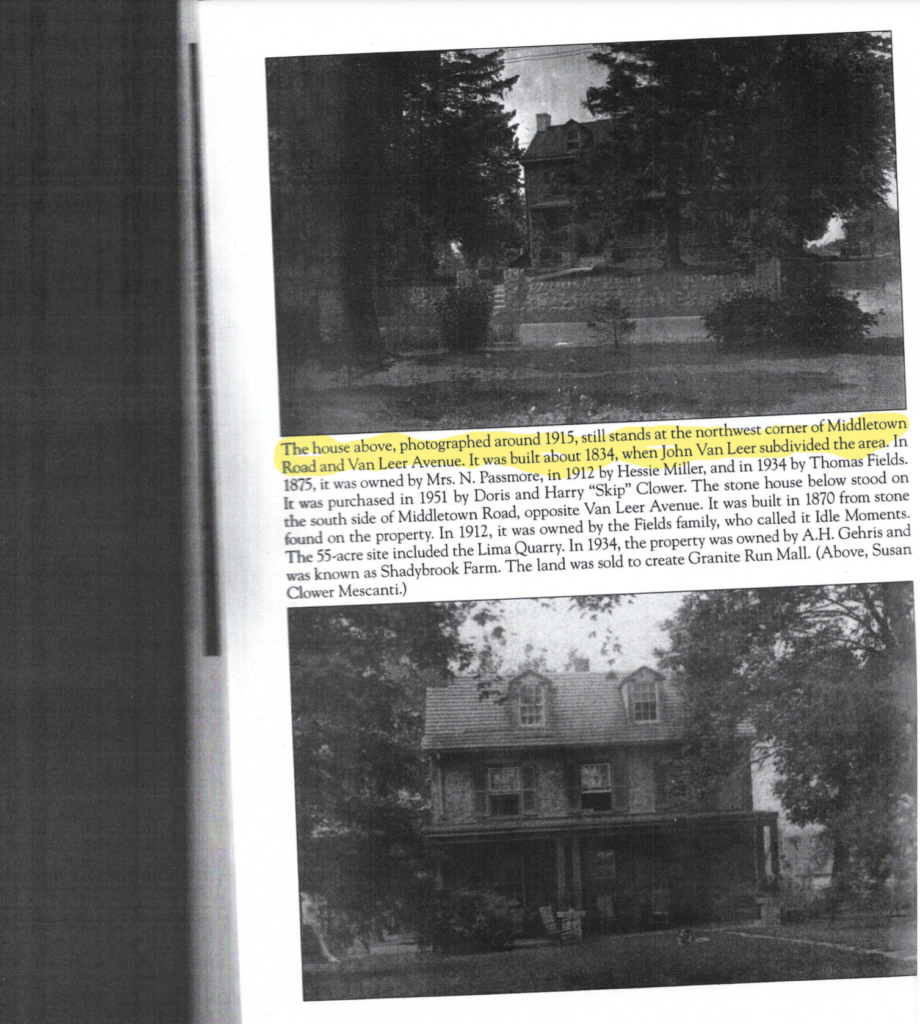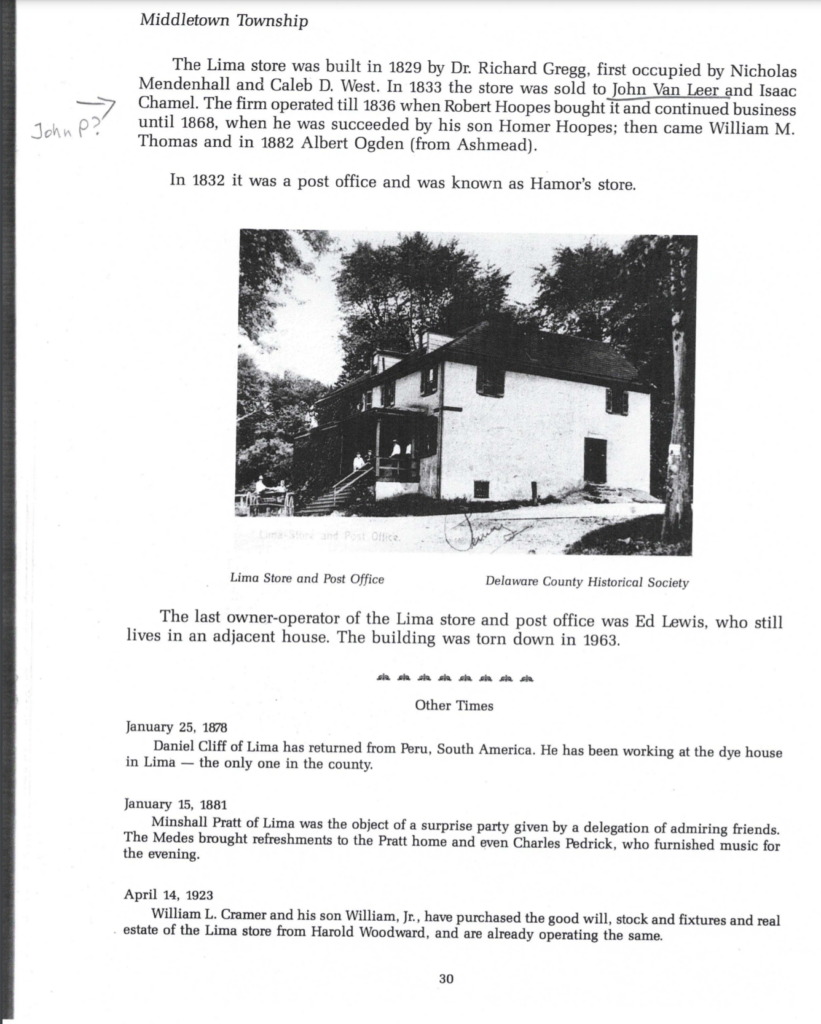Village of Lima
The Village of Lima is historically significant because its 19th Century
residents were active in the anti-slavery and Washingtonian temperance
movements. The involvement of ordinary citizens in both of these socially
responsible causes was instrumental in shaping the cultural and political
history of the united States.
Philadelphia was the center of the early anti-slavery movement. Initially
the Quakers were the most outspoken opponents of slavery. However, with the
evangelical revival in the late 18th Century the Methodists and Baptists
became very active in the anti-slavery movement. By 1790 the various
anti-slavery societies were meeting in a yearly convention for the purpose of
adopting plans and policies to encourage the manumission of slaves and to help
the newly freed slaves to be assimilated into free white society in the
northern states. The Quakers and Methodists of Middletown Township, Delaware
County practiced what they preached.

In the Village of Lima, free black tradesmen were resident owners of five of the ten houses within in the Village of Lima historical district. The free black community expanded as more parcels of ground were subdivided from the Rattew-Fox farm and conveyed to free black men. These lots were located along a private road that was later named Van Leer Avenue after John Van Leer and Van Leer family members. The Van Leers owned nearby Cabins which were used as Underground Railroad stations. They are on record financially supporting the stations through a local AME Church and were also noted for attending anti-slavery committee meetings. Sixty-nine acres along, what is now, Van Leer Avenue was sold to John P. Van Leer who subdivided 2 to 4 acre lots and sold or donated them to the free black occupants or only to people who were supportive of the free black community. There are records of “Vanleers” and other residents with both African and Caucasian ancestry in this area.Ref PA Archives
The Lima Methodist Church was built on one of the small lots. Roughly half a mile down the road there was a meeting house which was actually a station in the underground railroad to help runaway slaves. There is a recorded account of a group of men raiding the buildings for a fugitive slave, which they did not find.
By 1852 the free black community in Lima was sufficiently large and secure that it established its own house of worship near Lima. Renowned Underground Railroad “conductor” Harriet Tubman was known to point fugitives North to West Chester, West to Kennett Square or East to Delaware County and Philadelphia. Because of the strong support from white farmers in these areas, these routes were considered reasonably secure. In Media, Delaware County, the Providence Friends Meeting was known as an active participant of the Underground Railroad. Historians have also determined that the Honeycomb A.M.E Church, definitely sheltered escaped slaves. The Honey Comb A.M.E Church still holds regular services in the building erected on a lot subdivided from the farm.

In 1832, the Methodists living in and around the Village of Lima founded the Lima Methodist Church, despite the objection of and harassment by some of the more unruly patrons of the Blackhorse and Pine-Apple Taverns. By 1848 the residents of Lima and members of the Methodist Church established a temperance hall on North Pennell Road as part of the Washingtonian Temperance
movement.
About the Village
It’s located at the intersection of North Middletown (laid
out in 1686), North Pennell (laid out in 1750) and Barren Roads (laid out c.
1836).
By 1798 The Village of Lima consisted of six log dwelling houses, two barns
and a blacksmith shop. Early in the 19th Century all of the log structures
were replaced with stone buildings.
The Lima Store and Joseph Starr’s 1833 house and the frame home on the north side of Middletown Road have all been razed. However the remaining buildings have retained their architectural integrity.
